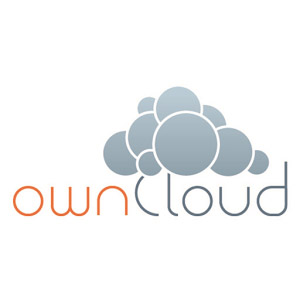
In this tutorial, we will show you how to install ownCloud on CentOS 8. For those of you who didn’t know, ownCloud is an open-source, self-hosted cloud platform for managing and sharing files. It can be used as an alternative to Dropbox, Microsoft OneDrive, and Google Drive. Owncloud is made by PHP and backend database MariaDB, SQLLite, or PostgreSQL. OwnCloud also enables you to easily view and sync address books, calendar events, tasks, and bookmarks. You can access it via the good-looking and easy-to-use web interface or install the ownCloud client on your Desktop or Laptop machine (Which supports Linux, Windows, and Mac OS).
This article assumes you have at least basic knowledge of Linux, know how to use the shell, and most importantly, you host your site on your own VPS. The installation is quite simple and assumes you are running in the root account, if not you may need to add ‘sudo‘ to the commands to get root privileges. I will show you the step-by-step installation ownCloud on a CentOS 8 server.
Prerequisites
- A server running one of the following operating systems: CentOS 8.
- It’s recommended that you use a fresh OS install to prevent any potential issues.
- SSH access to the server (or just open Terminal if you’re on a desktop).
- A
non-root sudo useror access to theroot user. We recommend acting as anon-root sudo user, however, as you can harm your system if you’re not careful when acting as the root.
Install ownCloud on CentOS 8
Step 1. First of all, make sure that all packages are up to date.
sudo dnf update
Step 2. Installing LAMP Stack.
If you don’t have a LAMP stack already installed on your server, you can follow our guide here. Also, install required PHP modules, run the command below to install other required PHP extensions for ownCloud:
sudo dnf install php-{spl,hash,ctype,json,mbstring,zip,gd,curl,xml,common}
Step 3. Installing ownCloud on CentOS 8.
First, download the new version of ownCloud. The latest stable version of ownCloud is version 10.3.2:
wget https://download.owncloud.org/community/owncloud-10.3.2.tar.bz2 -P /tmp
Once the download is complete, extract the archive:
sudo tar jxf /tmp/owncloud-10.3.2.tar.bz2 -C /var/www
Give proper permissions to the webroot directory with the following command:
sudo chown -R apache: /var/www/owncloud
Step 4. Configuring MariaDB for ownCloud.
By default, MariaDB is not hardened. You can secure MariaDB using the mysql_secure_installation script. You should read and below each step carefully which will set a root password, remove anonymous users, disallow remote root login, and remove the test database and access to secure MariaDB.
mysql_secure_installation
Configure it like this:
- Set root password? [Y/n] y - Remove anonymous users? [Y/n] y - Disallow root login remotely? [Y/n] y - Remove test database and access to it? [Y/n] y - Reload privilege tables now? [Y/n] y
Next, we will need to log in to the MariaDB console and create a database for the ownCloud. Run the following command:
mysql -u root -p
This will prompt you for a password, so enter your MariaDB root password and hit Enter. Once you are logged in to your database server you need to create a database for ownCloud installation:
MariaDB [(none)]> CREATE DATABASE owncloud CHARACTER SET utf8mb4 COLLATE utf8mb4_general_ci; MariaDB [(none)]> GRANT ALL ON owncloud.* TO 'ownclouduser'@'localhost' IDENTIFIED BY 'your-strong-password'; MariaDB [(none)]> exit;
Step 5. Configuring Apache for ownCloud.
We will create Apache virtual host for your ownCloud website. Now we create the following Apache configuration file:
sudo nano /etc/httpd/conf.d/owncloud.conf
Alias /owncloud "/var/www/owncloud/" <Directory /var/www/owncloud/> Options +FollowSymlinks AllowOverride All <IfModule mod_dav.c> Dav off </IfModule> SetEnv HOME /var/www/owncloud SetEnv HTTP_HOME /var/www/owncloud </Directory>
Save and close the file. Restart the Apache service for the changes to take effect:
systemctl restart httpd.service systemctl enable httpd.service
Step 6. Configure Firewall.
In case of OS firewall enabled on your server then provide access to ports 80 and 443 to be accessed from outside the network:
sudo firewall-cmd --zone=public --add-port=80/tcp sudo firewall-cmd --zone=public --add-port=443/tcp sudo firewall-cmd --reload
Step 7. Accessing the ownCloud.
Open your web browser and start the ownCloud installation by visiting your server’s domain name or IP address:
https://your_domain_name_or_your_ip_address/owncloud
Congratulations! You have successfully installed ownCloud. Thanks for using this tutorial for installing your ownCloud on CentOS 8 system. For additional help or useful information, we recommend you to check the official ownCloud website.